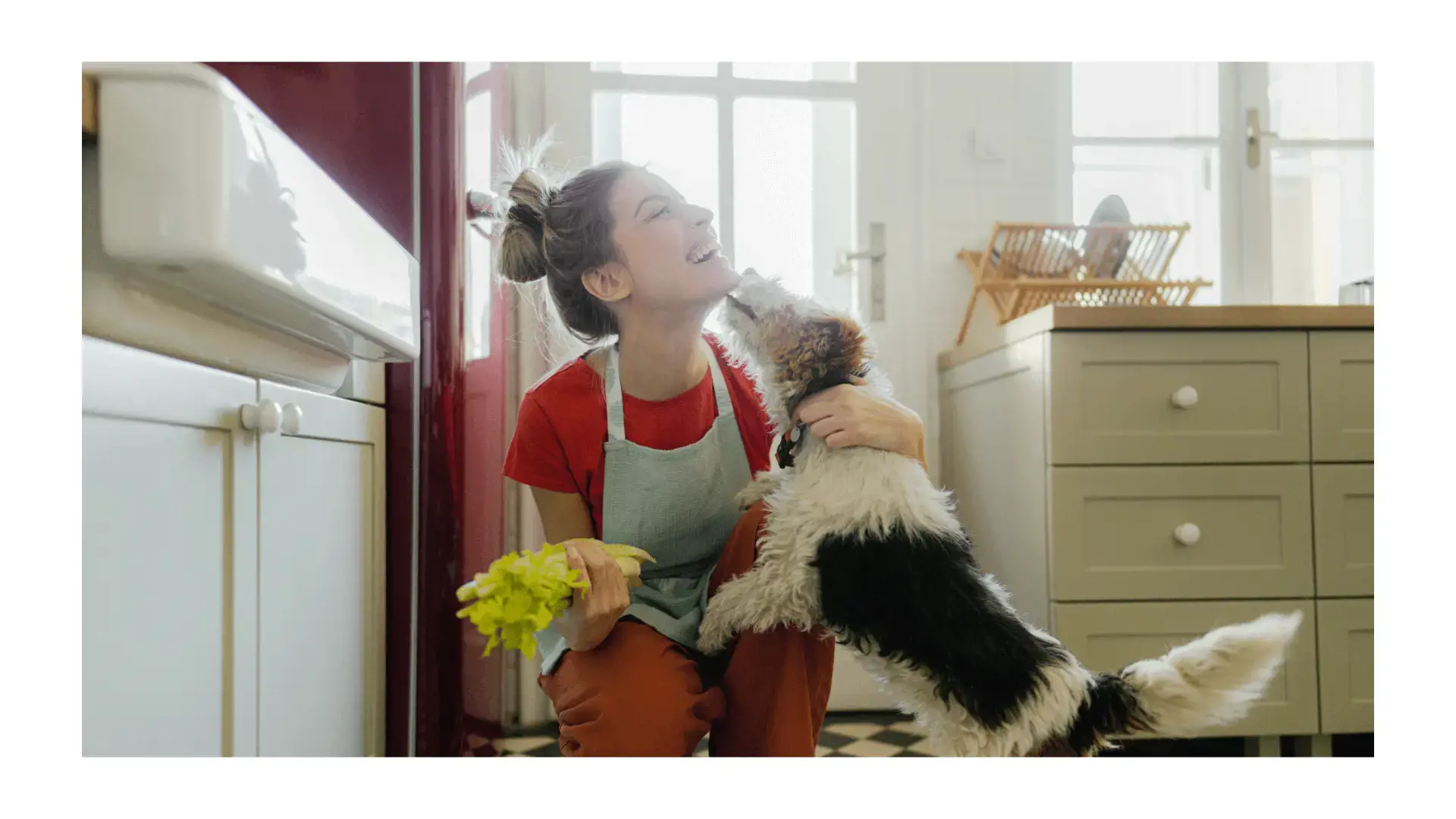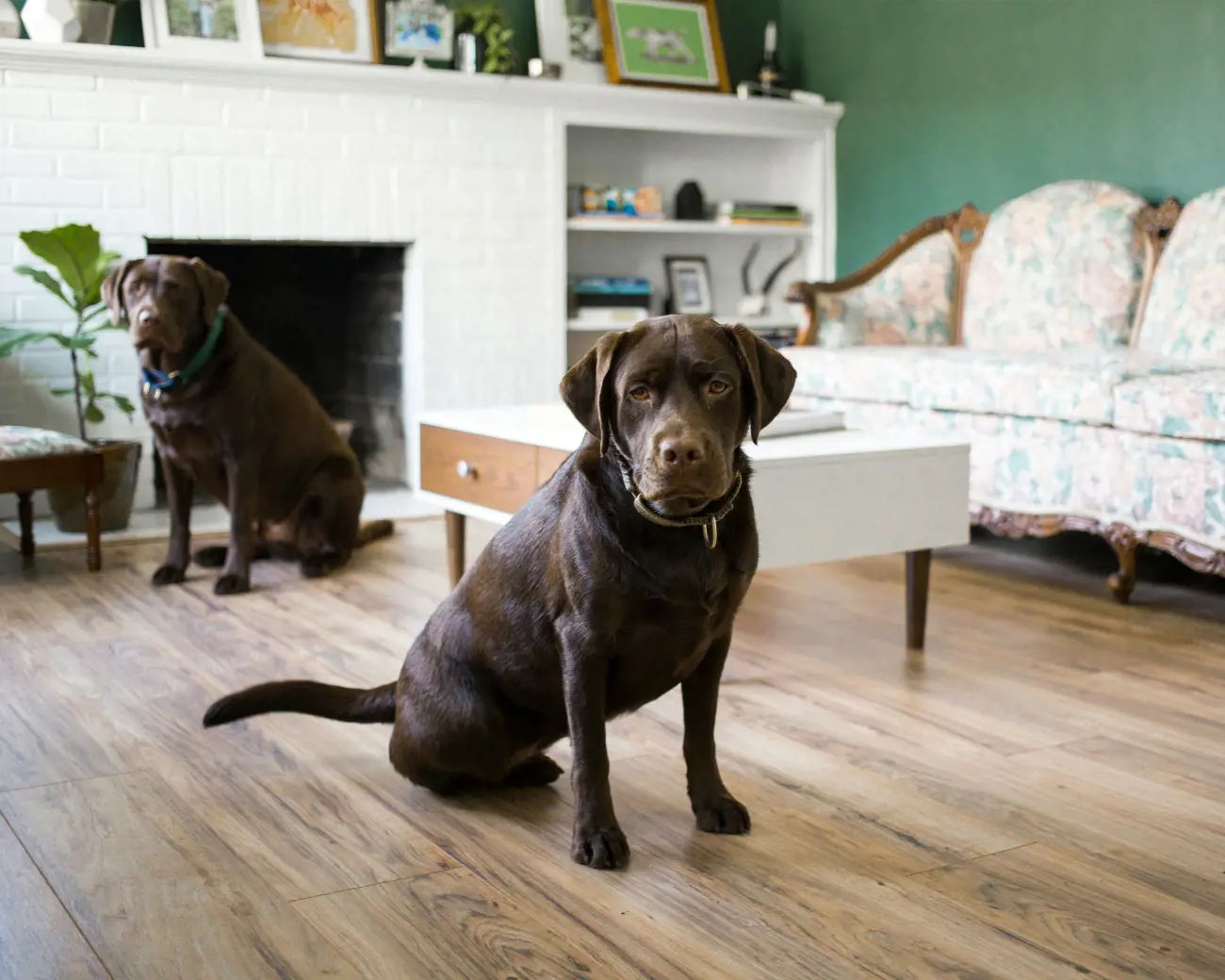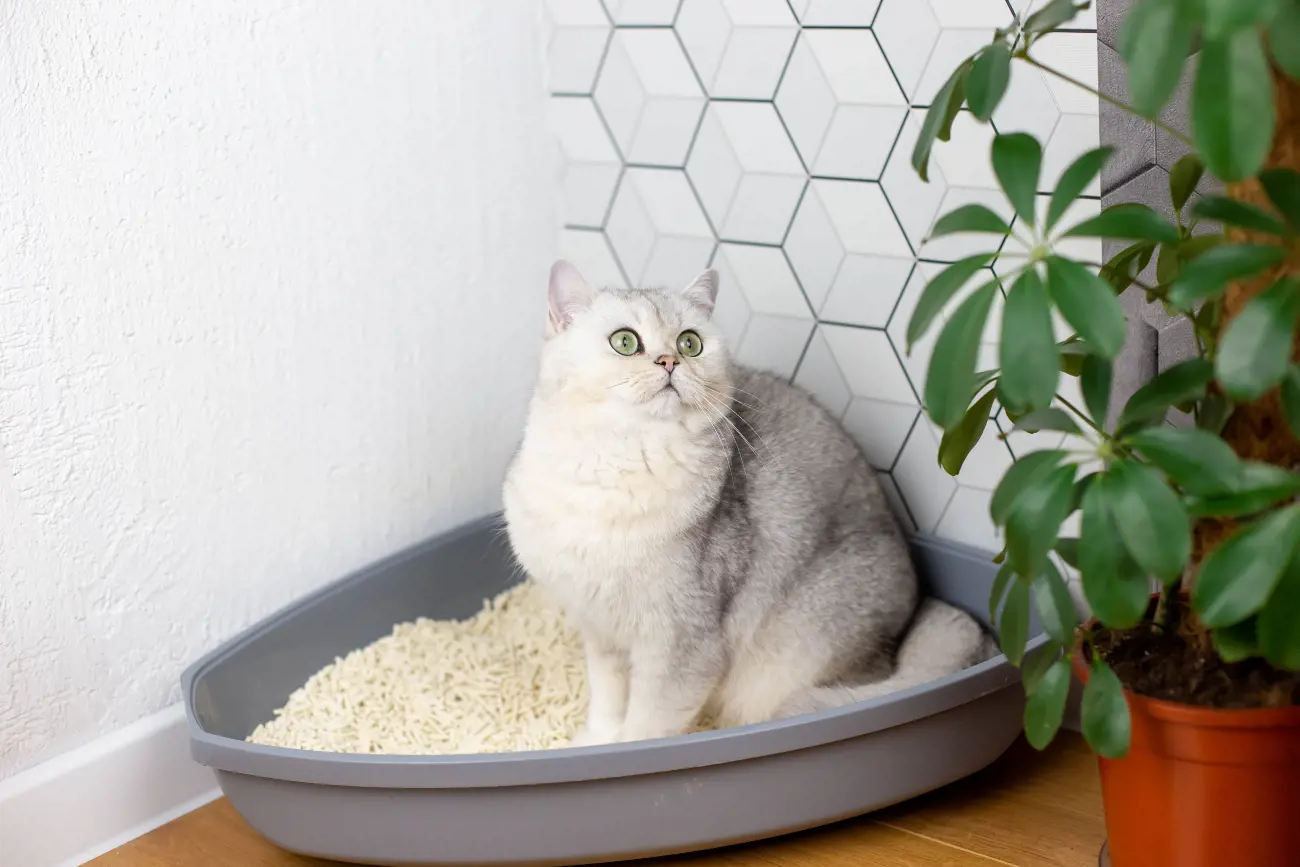A guide on how to bandage a dog's ear tip
15th November, 2022

If your dog recently injured its ear tip and you’re looking for ways to help it heal, you’re in the right place. This guide from Purely Pets tells you how to clean and monitor the injury properly, and how pet insurance cover may help cover costs of treatment.
There’s not a lot worse than seeing your faithful friend in a lot of pain, and ear tip injuries are common amongst canines for various reasons.
Whether your pooch tore its ear on a walk or shook its head and injured it as a result, it's likely your dog is in a lot of discomfort.
Ears have a lot of blood flowing through them, and a small nick can produce a lot of blood and take time to heal. The good news? You can often treat ear tip injuries at home in a few simple steps, which we walk you through below.
Even if you’re able to care for the ear at home, it’s a good idea to check in with your vet afterwards to make sure the pain isn’t due to something more serious.
To help with the cost of future unexpected treatment and care, speak with the Purely Pets team to protect your canine companion with pet insurance cover today.
What causes ear wounds in dogs?
Dogs are playful creatures, especially when they're in season! And can often be found tearing through the woods, rolling around on the floor, or play-fighting with other four-legged friends.
Unfortunately, all this rough and tumble means they sometimes get injured. Trauma is the most common reason for your pup’s ear tip injury, but it isn’t the only possible cause.
Your dog may have an infection or something stuck inside its ear canal, making it scratch the area and shake its head, cutting the tip in the process. It can also be a sign of a more serious health concern.
As a pet parent, it’s important to identify the cause of your dog’s injury to help you and your vet provide the right care.
Got pet insurance cover through Purely Pets? Then you can use the 24/7 vet video consultation line for immediate advice.
Here are some of the most common reasons why your dog gets ear wounds.
Trauma and tears
Dogs are active creatures and can easily injure their ear due to trauma while on a walk, from another dog bite, during a fight, or by itself when repeatedly scratching or shaking its head.
If there is severe bleeding and your pet is in a lot of pain, it’s an emergency. Take your dog to the vet immediately and contact your pet insurancecover provider to see if you are eligible for financial help for urgent care and treatment.
Ear infections and foreign objects
Dogs get ear infections due to bacteria and yeast or also as a result of foreign objects, like grass seeds, getting stuck inside the ear canal.
The itching and discomfort from an infection or foreign object can cause your dog to scratch its ear and shake its head, sometimes causing trauma to the ear tip.
Dogs with long, hanging ears are much more likely to develop an ear infection than those with small pointy ones.
Blood blisters (aural hematoma or vasculitis)
Vigorous head shaking and ear scratching can sometimes cause an aural hematoma, which we know more commonly as a blood blister.
These are blood-filled cysts and can cause a lot of mess when they burst. Unfortunately, dogs don’t pay much attention when we tell them not to scratch an itchy or uncomfortable site, meaning it can rupture over and over again.
Blood blisters are more common in thin-eared canines and need to be treated by a vet to avoid further damage, which will likely include surgery and pain medication.
Parasites
There are a host of mites, ticks, flies and fleas that can bite your pup’s ears and cause a huge amount of itching. Excessive scratching because of parasites can easily cause a nick or two to the tip.
Mange and biting fleas can also damage the skin and small blood vessels in your animal’s ear, causing wounds on the ear tip.
To prevent fleas and other parasites from affecting your dog, The Kennel Club recommends:
- Cleaning their bedding regularly.
- Vacuuming furniture and floors often and throwing away the dust bag with each use.
- Applying a parasite treatment with the help of your vet.
Cancer and other lesions
Sometimes, frequent scratches or wounds on your dog’s ear tips is a sign of something more serious.
It might be due to irritation from warts or polyps, but it could also be because of an internal or external tumour that needs urgent care.
The blood vessels in your pet’s ear can become cancerous. Any lumps and bumps must be seen by a vet as soon as possible, especially if you notice a change in the size, colour, or shape.
Signs my dog has an ear problem
It’s usually easy to spot when your pooch has something wrong with its ear. Depending on the problem, you might notice various symptoms, including:
- A wound
- Pain if touched
- Swelling
- Blood
- Ear discharge
- A foul-smelling ear
- Ear scratching
- Head shaking
- Rubbing ears against a surface
- Loss of balance
- Reluctance to open mouth
If your dog has an ear tip injury, you can identify the cause by looking for other signs. If the wound is accompanied by discharge and a bad smell, for example, it’s likely there may be an infection or a foreign object stuck inside.
What to do if your dog has an ear injury
According to Joii, as soon as you notice a cut or wound on your pet’s ear, you should perform the following checks to help them on the road to :
- Check your dog for other injuries, such as other cuts or scrapes. check for any swelling of the ear flap - this needs seeing by your local vet. Check to see if they are walking comfortably, if they seem ok in themselves or are in pain.
- Take a look at the wound If it’s small and barely bleeding, you can go to step 3. If the wound is obviously severe (large, bleeding a lot etc.), contact your vet immediately. Don’t poke around in the wound if you see glass or dirt in there, leave that to the professionals.
- Clean the wound to help prevent infection and promote healing. You can find steps showing you how to do this below.
- Book an appointment with your vet if you’ve treated the wound at home to check it’s healing well and shows no sign of infection. Call your pet insurance cover provider to see if you can make a claim for the cost of medical bills.
Remember, if you have a policy with Purely Pets, a vet can see your dog via the 24/7 vet video consultation service and assess the injury immediately.
When should I take my dog to the vet?
Whenever your pup has something wrong with its ear, it’s a good idea to see the vet. Even when it’s something you can easily manage up at home, seeing a professional can rule out any further health problems and make sure the wound is healing nicely.
If there’s a lot of blood and your dog seems very ill, get them to the vet immediately. If it’s a small cut and you can clean it yourself, do so, but then take them in or call the Purely Pets video consultation service at no additional cost for advice if you have pet insurance cover with us.
Depending on the cause of the ear tip injury and any underlying health issues, your canine companion may need treatment such as:
- Antibiotics for an infection
- Pain medication to alleviate discomfort
- Deep cleaning to remove ear wax build up
- Steroids for inflammation and to promote healing
- Surgery to stop bleeding from a blood blister and allow it to heal
- Surgery to remove a foreign object if found
- Further treatment for underlying health issues if necessary
Step-by-step guide to cleaning a dog’s ear
Has your dog got a minor cut or graze you want to stop it from scratching? You might be able to help it heal by providing basic first aid treatment all pet parents should know.
Remember, if it’s something more serious, seek veterinary advice and contact your pet insurance cover provider to see if you can get help with the costs of emergency care.
During the healing process, your dog’s ear needs to be kept clean and dry, which can be tricky with an energetic and playful dog. Use our technique below to clean your pet’s ear and keep it from becoming infected.
Before you start you’ll need to gather a few items:
- Salt water (1 tsp salt for each pint of boiled water)
- Cotton pads
Now, follow our step-by-step guide to bandage the ear:
- Make up some saline by adding 1tsp salt to 500mls warm water and stirring until the salt is dissolved
- Bathe your dog’s ear tip injury with the salt water to wash away bacteria and promote healing, always wiping away from the wound.
- If the wound is bleeding, using two cotton pads, apply pressure to either side of your pet’s ear. It can take up to 10 minutes of pressure to stop it from bleeding.
Plan on cleaning the wound three times a day to keep it free from bacteria and make sure it’s healing.
Take your dog to the vet to double check there’s no infection or underlying cause as to why your pet got the wound in the first place.
Advice on settling an overexcited dogs during ear cleaning

Carolina Paz, DVM MRCVS
Veterinary SurgeonIf your dog doesn’t mind having its ears touched but is just overexcited, it's very important to settle him before any attempt is made. You may achieve this by: Taking them to a quiet place, then give them a few moments until they settle. Depending on your dog's character, it may be more useful to stay nice and still next to them until they settle. Or you can do unrelated tasks to divert their attention from you. When the emotion we are looking for is achieved, approach him with no excitement and proceed with the cleaning task. You should reward them in the end.
How to calm a dog down during ear cleaning

Carolina Paz, DVM MRCVS
Veterinary SurgeonIf your dog doesn’t like to have their ears touched is important to train them in order to achieve a successful treatment if ever required. Using reward-based training will make this a more enjoyable and easier experience. Take them to a quiet place. Give a few moments until they settle. Cuddle their head and ears. Reward them. Use a wet cotton ball and touch their ears. Reward them. When your dog is comfortable with this start cleaning gently the ear. If your dog is fidgety and small, use a towel to wrap them up and gently restrict their movements. Otherwise, hug them to help restrict their movements. You should reward them in the end.
How can I tell if my dog’s ear is infected?
If you suspect your pet’s ear injury is infected, take them to the vet immediately to stop it from getting worse and find the right treatment.
Signs of an ear tip infection include:
- Warm to the touch
- Excessive itching
- Swelling and redness
- Discharge from the wound site
Can I put a plaster on my dog’s ear?
If your playful puppy got a small cut while rolling around at home, you might be tempted to put a plaster on it as a quick fix.
While this is a good way to keep your own cuts dry and promote healing, they don’t work as well for dogs. Plasters can’t stick to furry ears and come off easily with the slightest scratch or shake of the head.
Does my dog need a cone?

Cones and collars are a great idea to stop your pet from scratching its wound and making it worse. If your dog causes the cut to bleed again, it’s at higher risk of inflammation and infection, meaning it will take much longer to heal.
Can a dog’s wound heal by itself?
If your four-legged family member’s injury is a very small cut or graze, it may heal on its own in a few days, if it stays clean and dry.
You’ll still need to clean the wound with salt water daily and stop your pet from licking it to promote quicker healing, which you can easily do if you have a cone at home.
How long does it take a dog’s ear tip injury to heal?
Ear wounds in dogs may seem minor, but they can take a long time to heal – usually a minimum of 1-2 weeks. Why? Due to the discomfort caused by the injury, your pooch is likely to shake and scratch its ear.
Sometimes, just when you think the wound is healing, your pet shakes its head, catches the scab, and it starts oozing with blood again.
This is why, however big or small your pup’s injury appears, it’s important to check with a vet and monitor it to prevent infection.
Alternatively, contact our vet video consultation service if you have pet insurance cover with Purely Pets for quick and professional advice.
If your dog suffered a severe infection or got an ear injury due to an underlying condition, it could take months to heal and may even become a chronic issue.
What should I never put on a dog ear injury?
No responsible pet parent wants to put their beloved dog through more suffering, so it’s important to know what not to do to treat a wound.
Never use antiseptic or antibacterial ointment without speaking with your vet first. Use your Purely Pets pet insurance cover to contact the video consultation service and ask for advice.
You should also steer clear of using hydrogen peroxide or rubbing alcohol on your dog’s ear. Despite the common perception that these promote healing, they can actually slow it down and damage the tissue even more. They also sting, ouch!
Only use salt water to bathe the wound until you seek professional help.
Which dogs are more prone to ear tip injuries?
All canines are susceptible to the odd ear injury, but some breeds are more prone to them than others. If your pet’s ears hang low, you need to be extra cautious.
Droopy ears allow less airflow and make it easier for moisture and debris to build up in the ear canal, leading to yeast infections.
The dangly ears of scent hounds and tracking breeds might look adorable, but if you own one of the following types of dogs, you’ll need to clean their ears often and keep an eye out for cuts and grazes:
- Red Setter
- Basset Hound
- Cocker Spaniel
- Afghan Hound
- Beagle
- Lhasa Apso
- Weimaraner
- Havanese
Regular visits to the vet can help identify any hidden ear issues with your long-eared canine companion.
As well as pet insurance cover, it’s a good idea to speak to your vet about a pet health plan. While the former covers your dog in case of emergency care, the latter helps spread the cost of routine treatments and check-ups.
How to keep your dog’s ears clean
Whether it has long dangly ears or small ones that stand on end, your four-legged friend will need them cleaned from time to time.
You’ll have to clean longer and bigger ears more often, so speak to your vet to find the ideal grooming regime based on their breed.
If your dog is comfortable with you cleaning their ears at home, it’s fine to do so. The process is simple, and you can start by having the right equipment to hand:
- A clean towel
- Bowl of water
- Cotton wool or pads (never use cotton buds as these go too far into the ear and can cause damage)
- Dog-friendly ear cleaner
- Treats to reward your well behaved dog
If your dog is new to having its ears cleaned or you find it challenging to keep them still, you might need a second pair of hands to help.
Once you’re ready and your dog is comfortable, follow these steps:
- Take your pet’s ear between your thumb and forefinger and lift it to get a good look inside.
- Check for any redness, discharge, or a foul smell that signals infection. If you spot any, your pup will need to see a vet. A small amount of light coloured ear wax is completely normal.
- Take a ball of cotton wool or a pad and dip it into the water bowl. Wring out the excess liquid and gently wipe around the ear entrance to remove wax and dirt.
- Carefully put the tip of the ear cleaner bottle just inside the ear canal and squeeze the liquid inside. Make sure you don’t insert the tip too far or you could cause a lot of damage.
- Give the base of your dog’s ear a massage to help the liquid pass further into the canal.
- Use another damp piece of cotton wool to wipe away excess cleaner from the entrance.
- Now, repeat the process for the other ear.
- Give your well-behaved pet a treat so it knows it did a great job of sitting still and to encourage it to do it again in the future.
If you have ear drops from your vet for an infection or to prevent excessive wax build-up, now’s a good time to apply them. When the ear canal is clean, the medicine can enter properly and get to work without getting stuck on debris or wax.
Pet insurance for your four-legged friend
Ear tip injuries are just one of many possible reasons why your canine companion might need emergency care.
Across their lifetime, pet parents can expect to spend thousands on vet bills, so why not protect your pup with a lifetime insurance policy?
A dog insurance plan from Purely Pets is a wonderful way to reward your canine companion’s loyalty and provides:
- Cover for up to £15,000
- Unlimited vet video calls for expert advice
- Online policy management at a time to suit you
To give your beloved pet the protection it deserves, get an pet insurance cover quote today.
Helpful Pages
Recent Posts

How much should my dog sleep?
04/11/25
Cook for your Pet Day!
29/10/25
Why do Labradors always look sad?
16/10/25Pet Insurance Quote
- 98% claims paid *
- Claims paid directly to vets
- 24/7 vet video consultations
- Interest free monthly payments

